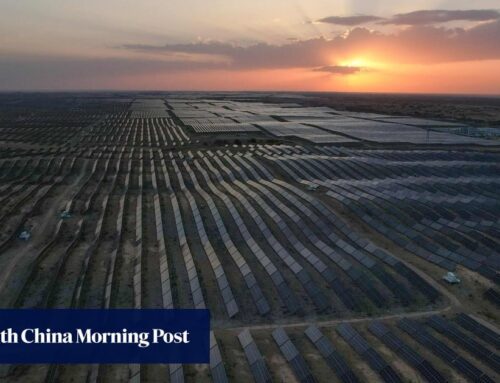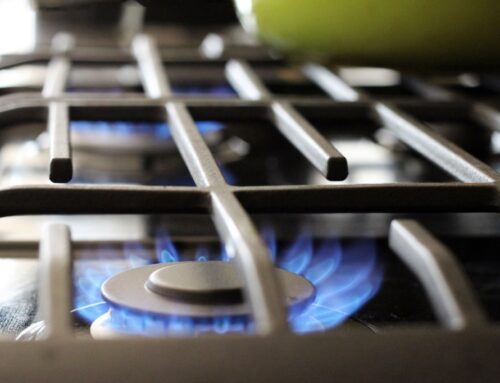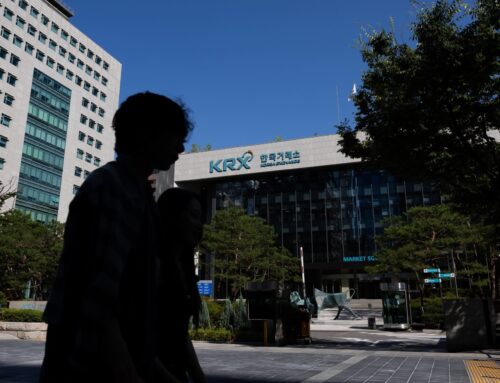Southwest Side Activists Demand Transparency In Proposed Environmental Justice Ordinance
April 4, 2025
CHICAGO — The city could soon consider an environmental justice ordinance aimed at protecting neighbors from the combined effects of pollution in their neighborhoods.
The Hazel Johnson ordinance, named after the South Side environmental activist, could be introduced to City Council April 16. The ordinance would bring changes to the city’s planning, zoning, permitting and land-use policies, city officials and environmental leaders involved in creating it told Block Club.
It comes as the Trump administration has aggressively moved to reverse air pollution regulations and other environmental protections.
While the text of the ordinance has not been made public, some prominent environmental groups have already expressed their support and called on neighbors to urge City Council members to vote in favor of the measure.
“We’re calling on the City Council to pass the ordinance and put an end to the policies that have sacrified our communities,” said Mariah Mata, a member of the Chicago Environmental Justice Network Group who attended last month’s City Council meeting with other environmental advocates.
But Southwest Side environmental advocates said the city has sidelined some of the neighbors most affected by pollution, who have long worked to shape Chicago’s environmental justice policies, and hasn’t been transparent in the process of drafting the measure.
“I’ve asked for the full ordinance. I never got it. I asked some of the aldermen that are sitting here around the tables: ‘Have you seen it?’ No. It’s hush-hush,” Theresa McNamara, leader of the Southwest Environmental Alliance, said Wednesday at a meeting of the City Council’s Committee on Environmental Protection and Energy. McNamara has been a vocal critic of the city’s inaction to hold accountable serial polluters MAT Asphalt and SIMS Metal Management.
The ordinance comes after a yearslong push by environmental activists and neighbors for the city to recognize and address environmental racism. The city has perpetuated environmental inequities through zoning, land-use and planning policies that have concentrated industrial facilities and heavy truck and rail traffic in South and West side neighborhoods, advocates said.
Combined with the effects of segregation and other social and economic conditions, South and West side neighbors are more vulnerable to adverse health effects caused by pollution, studies have found.

The ordinance is a first step in addressing some of these inequities, said Oscar Sanchez, co-executive director of the Southeast Environmental Task Force, one of the groups involved in crafting the ordinance. The group scored a major victory when the city settled a federal civil rights complaint claiming Chicago discriminated against Black and Brown residents by moving polluters into their neighborhoods after years of neighbors’ pushback and protests.
“I think people expressing their dissatisfaction is really important, because that’s the shared experience we all have. We have a shared experience of being from sacrifice zones,” said Sanchez, who in 2021 participated in a weekslong hunger strike to block metal scrapper Southside Recycling from obtaining a permit to operate on the Southeast Side.
The Hazel Johnson ordinance will propose changes to the zoning process for certain industries and facilities with a high potential for pollution, Kathleen O’Shea, director of public affairs for the city’s Department of Environment, said in an emailed statement.
“It will be impacting permitting and will be impacting zoning,” Sanchez said.
The ordinance would require the city to consider the cumulative impact of various pollutants when making decisions and calls for an environmental justice advisory board to provide written recommendations in zoning processes — critical protections that could change discriminatory zoning and land use practices, he said.
Details about the advisory board and how the ordinance would work are still being discussed, Sanchez said.
Under former Mayor Lori Lightfoot’s administration, the Department of Public Health found South and West neighbors have some of the worst air quality in the city, in a report that called for reforming regulations for areas zoned for heavy manufacturing and industrial corridors.
In 2023, Lightfoot signed an environmental justice executive order calling on the city to complete a cumulative impact assessment and center environmental justice in decision-making.
Under Mayor Brandon Johnson’s administration, the city completed that cumulative impact assessment in partnership with several city departments and a coalition of local organizations that provided community input and recommendations.
Groups like the Village Environmental Justice Organization, National Resources Defense Council, Neighbors for Environmental Justice, People for Community Recovery and the Southeast Side Environmental Task Force participated in working groups to create the ordinance and other policies, according to city reports.
“The Hazel Johnson Cumulative Impacts Ordinance is a critical step in addressing environmental inequities while strengthening regulatory oversight,” O’Shea said.

But some neighbors and environmental advocates said it is difficult to support a proposed ordinance they have not seen — even after they were initially invited to be part of the coalition working to create it.
“We haven’t seen it, so I don’t know how anyone’s supporting it or why the city’s urging support for it at this point, if no one’s seen anything,” said Brian McKeon, a member of Lucha por La Villita and a critic of the city’s controversial decision to renew a permit for Pilsen metal shredder Sims Metal Management.
In summer 2024, McKeon, McNamara and Baltazar Enriquez, president of the Little Village Community Council, were among a dozen environmental advocates from local organizations invited by Department of Environment officials to be part of the environmental equity working group providing the city feedback on the ordinance, according to emails reviewed by Block Club.
But they were later excluded from updates and left out of meetings held in February where the working group received updates about the ordinance, despite asking to be informed, McKeon said. The Southwest Side advocates called out flaws in the city’s cumulative impacts assessment, which sparked debates when some of its findings contradicted the experience of neighborhoods overburdened by pollution, and questioned the city’s decision to renew Sims Metal Management’s operating permit.
“Maybe we’d know more if we were still a part of the environmental equity working group, but apparently environmental advocacy will get you kicked off that,” McKeon told Block Club Wednesday.

Some advocates are also concerned the ordinance may not include mechanisms to enforce rules or impose penalties for violations to existing industries.
“We haven’t seen language of the ordinance. If any of you have seen it, we haven’t. But, even the best ordinance, if it’s written fantastically, without enforcement, is useless,” McKeon said.
If a new zoning process makes it harder for companies to get permits to open in other city areas, that could worsen pollution in South and West side neighborhoods that already have areas zoned for industrial use, Enriquez said during Wednesday’s environmental protection committee meeting.
“If you’re going to pass this ordinance, make sure you sit down with real grassroots organizations,” Enriquez said.
Sanchez said the proposed ordinance would include zoning measures for existing companies that “will make sure that we are addressing expansions of these companies” and a permitting process that considers neighbors’ health for new companies.
“These communities have some of the highest asthma and cancer rates. We’d need those to be documented, to demonstrate to developers and to our public officials before supporting these projects,” he said.
O’Shea called the claims from some local environmental advocates that they were excluded from discussions about the ordinance “inaccurate” and said the city has worked with community groups and frontline leaders “from the design of the analysis through ordinance implementation.”
The ordinance will be available to the public when it is introduced to City Council, with ample time for community input and public comment, O’Shea said.
“We will continue to work collaboratively with frontline leaders, community
residents, advocates, and leaders across all sectors to implement this important policy and build a healthier, more equitable Chicago,” she said.
Once introduced, the ordinance would be referred to a city committee for review. If passed, it could be introduced for a vote by the full City Council in coming months.
“This is the first step. It’s not the final step,” Sanchez said.
Listen to the Block Club Chicago podcast:
Search
RECENT PRESS RELEASES
Related Post




